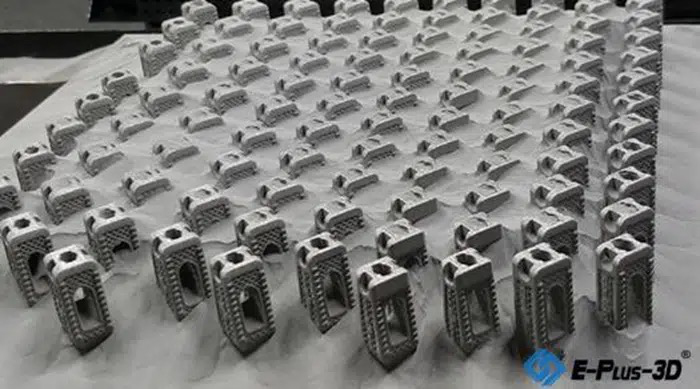Medical device company MANTIZ has acquired an Eplus3D EP-M260 metallic 3D printer to additively manufacture cages in titanium for use in implant surgery. The entire process of shaping the company’s proprietary PANTHER spinal implants is now carried out internally by MANTIZ.
The large print bed size of EP-M260 can be used to produce more than 50 individual spinal implants in one run. Hongwon Yoon, CTO of MANTIZ and inventor of MANTIZ’s PANTHER 3D print cage system, said: “We have completed the development of a more improved titanium 3D printed cage implant using the EP-M260 3D metal printer. Mechanical test results prove the safety and functionality of the implant. 3D printing The average closed pore ratio of the solid titanium component is 3%, which promotes the binding of the protein for bone fusion to the mesenchymal stem cells.”
Manufacturing on Demand
MANTIZ is a Korean medical device company that uses superior engineering and technology to achieve an active and painless life for all patients with spinal disorders. The company obtained KFDA certification (medical device approval) and is listed on the HIRA (Health Insurance Review and Evaluation) list in South Korea. MANTIZ began developing 3D printed cage implants in 2018 with government approval and funding. In May 2019, they launched a 3D printed PANTHER cage system for PLIF (Poster Lumbar Interbody fusion) / TLIF / OLIF / ALIF surgery. This process uses 3D printed cage implants without outsourcing the manufacturing process to a third party. This saves customers time and money and reduces the chance of production errors.
As additive manufacturing technology continues to advance, so does its application and accessibility. Rapid prototyping and tooling are at the forefront of 3D printing, but the goal has always been to be able to print directly for production or directly for manufacturing. The medical world is no exception. Although the first 3D printing applications in the medical field were prototyping and visualization guides, this technology has finally reached the stage of custom implants using state-of-the-art 3D printers.
With its latest line of metal 3D printers, Eplus3D is drawing the attention of medical partners who are incredibly leveraging this technology. MANTIZ is one of Eplus3D’s pioneering partners in the creation and use of medical implants. Only after a series of mechanical tests, the 3D Printed cage can be applied in surgery.
Through the process of “design-3D printing-post-processing-testing”, the PANTHER can be ready for operating surgery. PANTHER implants have already been applied in treatment for patients. They have been formulated to optimize bone growth during spinal procedures, with an average pore size range of 630-730μm in the contact surface of the spinal end plates and an average porosity of the mesh section in the range of 70% -80%.
* This article is reprinted from 3D Printing Media Network. If you are involved in infringement, please contact us to delete it.
Author: 3D Printing Media Network





Leave A Comment